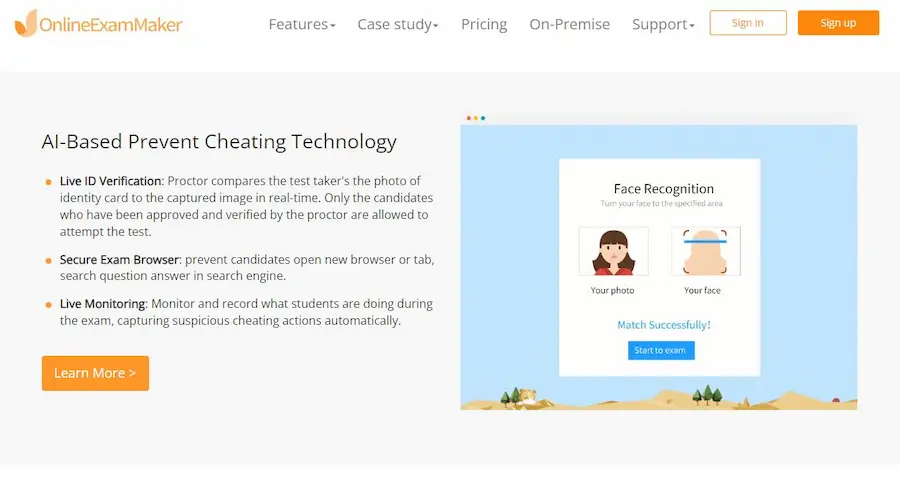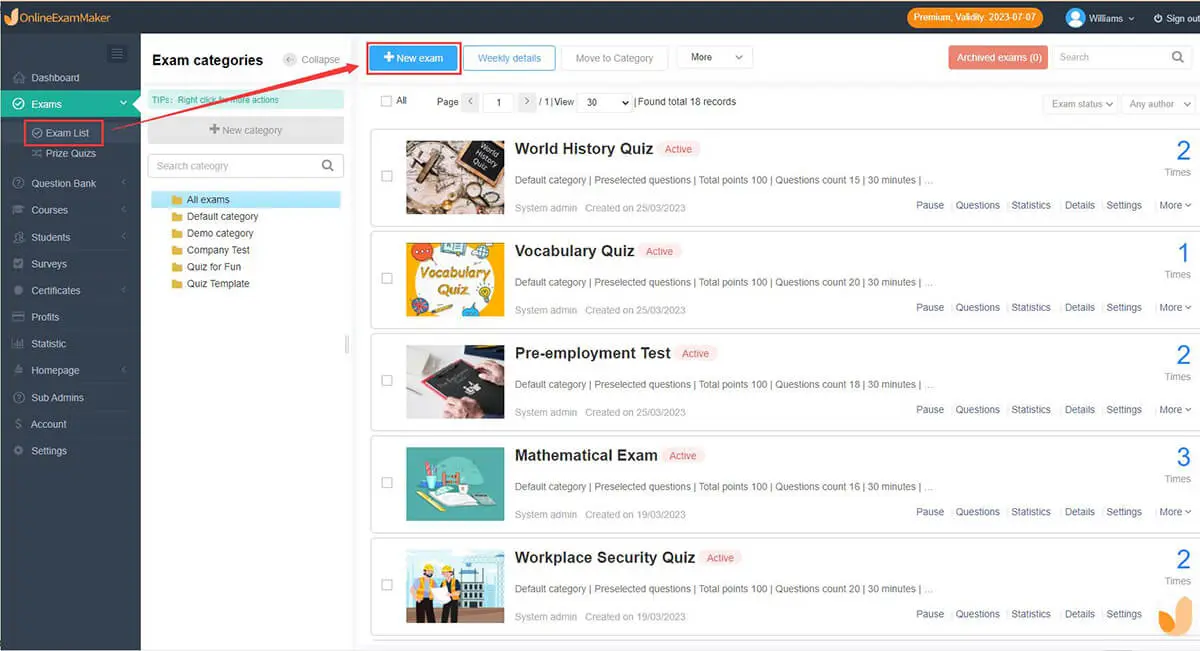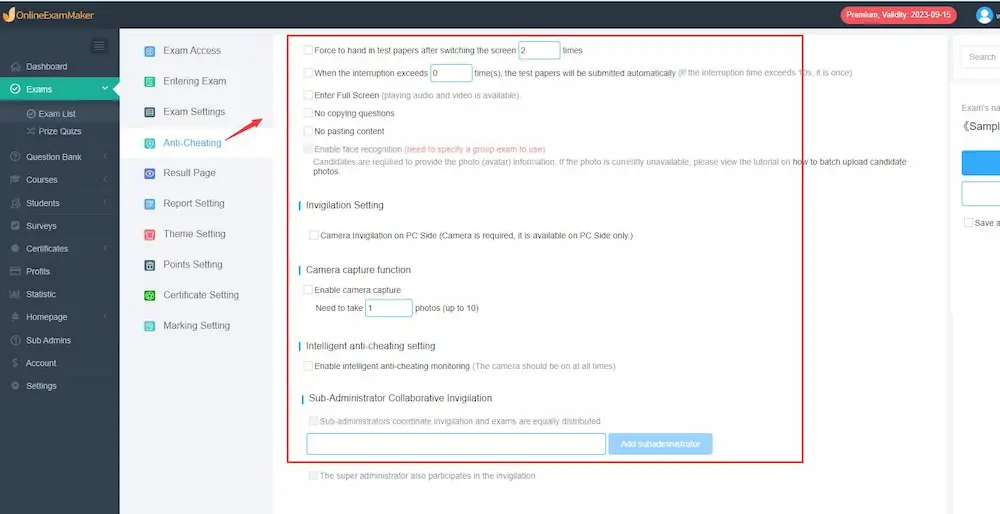The advent of the 21st century has ushered in remarkable technological advancements, reshaping various sectors, including education. Traditional chalk-and-board teaching has gradually given way to digital classrooms, and with this shift, the dynamics of evaluation are changing. As remote education becomes more prevalent, the need for reliable online assessment methods has become paramount. In this milieu, online proctoring software emerges as an innovative solution to uphold the sanctity of digital examinations.
What is Online Proctoring Software?
Firstly, what is online proctoring software? Think of it as the digital counterpart of an examination invigilator. It oversees students as they undertake online tests, ensuring the integrity of the process.
These systems broadly fall into three categories:
1. Live Proctoring: This involves a real person, the proctor, who remotely monitors the examinee in real-time, ensuring there’s no malpractice.
2. Recorded Proctoring: The student’s entire test session is captured and stored for future scrutiny.
3. Advanced Automated Proctoring: This is where artificial intelligence steps in. The software autonomously monitors test-takers, using algorithms to detect and flag any dubious activity.
You might like to know
Create an auto-grading quiz/assessment without any coding – try OnlineExamMaker today!
Features and Components of Online Proctoring Software
These digital watchdogs come packed with features designed to ensure the transparency of the examination:
• Webcam Monitoring: This allows continuous visual surveillance of the student, ensuring they don’t resort to unfair means.
• Audio-Video Recording: It serves a dual purpose – creating a record for potential review and acting as a deterrent against cheating.
• Browser Lockdown: This feature restricts students from navigating away from the test window or accessing unauthorized online resources.
• AI-driven Behavior Analysis: Advanced algorithms monitor eye movement, facial expressions, and other nuanced behaviors to detect dishonesty.
• Activity Logs: A record of all on-screen activities, ensuring that no external software or resources are used during the test.
• Flagging Suspicious Actions: Any irregular activity is flagged in real-time, allowing for immediate intervention or post-exam review.
Benefits of Online Proctoring
Embracing online proctoring offers a slew of benefits:
• Integrity Assurance: It ensures that the results of online tests are genuine and trustworthy, mirroring the credibility of traditional exams.
• Flexibility: Students can opt to take exams from the comfort of their homes or any other location, eliminating the stress of reaching exam centers.
• Cost-Effective: Institutions can save significantly on logistical and administrative costs associated with organizing physical exams.
• Accessibility: Especially pertinent for international students or those living in remote areas, online proctoring removes geographical barriers.
Challenges and Concerns
However, it’s not a silver bullet. Several challenges shadow the prospects of online proctoring:
• Privacy Issues: The very idea of being continuously monitored, with data being recorded and stored, raises pertinent questions about student privacy.
• Technical Glitches: Not all students have access to high-end devices or stable internet connections. Disruptions during exams can be nerve-wracking.
• False Positives: Sometimes, the software might misinterpret innocuous behaviors, such as looking away momentarily, as cheating.
• Ethical Dilemmas: Continuous surveillance can be discomforting, and the debate around its ethical ramifications continues.
Is Online Proctoring the Future of Remote Education?
Post the COVID-19 pandemic, remote education isn’t just an option; it’s become the norm. As digital classrooms become more prevalent, online proctoring will undoubtedly play a pivotal role in shaping remote assessments. We can anticipate more refined AI-driven monitoring, enhanced features, and even hybrid proctoring models combining human oversight with AI.
However, it’s crucial to remember that education is a diverse field. While online proctoring offers a solution, it may not be the only one. Institutions might also lean towards alternative assessment methods like continuous evaluation, open-book exams, or project-based assessments.
How to create an AI proctored exam?
1. Select OnlineExamMaker online exam platform

OnlineExamMaker is a leading online proctoring solution that provides secure and reliable exam monitoring services for educational institutions and organizations. The platform offers multiple proctoring options, including live proctoring, automated proctoring, and record-and-review proctoring, catering to the diverse needs of institutions and the specific requirements of different exams.
Key Online Proctoring Features:
• Live Proctoring: Real-time monitoring by trained proctors during exams.
• Automated Proctoring: AI-driven detection of potential cheating behaviors.
• Record-and-Review Proctoring: Comprehensive exam session recordings for later analysis.
• Flexible Proctoring Options: Choose from various proctoring modes to suit exam needs.
• Facial Recognition: Ensures accurate student identification using facial verification.
• ID Verification: Validates test-taker identity with identification checks.
• Behavior Analysis: AI algorithms detect suspicious activities during the exam.
• Browser Lockdown: Prevents access to unauthorized resources during the test.
• Proctor Intervention: Live proctors can intervene via chat if necessary.
• AI-driven Anomaly Detection: Identifies irregular behavior patterns during exams.
Create Your Next Quiz/Exam with OnlineExamMaker
2. Design Your Exam

Question Design: Ensure that your questions are clear, unbiased, and appropriately challenging. Consider using a mix of question types (multiple-choice, short answer, essay) to assess different cognitive levels.
Randomization: To prevent cheating, use the platform’s ability to randomize questions or answers, so each student gets a slightly different version of the exam.
Time Limits: Set a time limit that’s reasonable for the content but also helps deter students from looking up every answer.
3. Configure Proctoring Settings

Authentication: Set up identity verification measures, such as ID scanning, facial recognition, or keystroke dynamics.
Environment Checks: Require students to show their workspace using their webcam to ensure no unauthorized materials are present.
Monitoring Settings: Configure the system to monitor the student’s screen, use webcam feeds, and/or use audio feeds. Decide between live proctoring (where a proctor watches in real-time) or automated proctoring (where software flags suspicious behaviors for later review).
4. Provide Clear Instructions
Make sure students are fully aware of:
• The technological requirements (webcam, microphone, stable internet connection).
• The proctoring process and what they can expect.
• The rules of the exam (permitted materials, bathroom breaks, etc.).
• Steps to take if they encounter technical issues.
5. Run a Test Session
Before the actual exam, consider hosting a mock test session.
• Helps students familiarize themselves with the proctoring software.
• Allows you to test and troubleshoot potential technical issues.
• Provides an opportunity to address student concerns.
Conclusion
In the grand tapestry of remote education, online proctoring software emerges as a pivotal thread, binding the integrity of digital assessments. But as with all technologies, it’s a tool, not the final solution. As educators, institutions, and students navigate the burgeoning realm of digital education, striking a balance between innovation and ethics, convenience and credibility, will shape the academic landscape of the future.